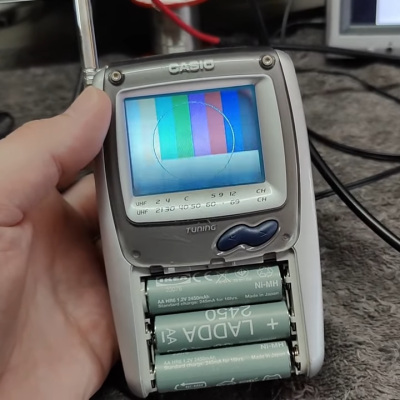The picture on a TV set used to be the combined product of multiple analog systems, and since TVs had no internal diagnostics, the only way to know things were adjusted properly was to see for yourself. While many people were more or less satisfied if their TV picture was reasonably recognizable and clear, meaningful diagnostic work or calibration required specialized tools. [Thomas Scherrer] provides a close look at one such tool, the Philips PM 5519 GX Color TV Pattern Generator from 1981.

The Philips PM 5519 was a serious piece of professional equipment for its time, and [Thomas] walks through how the unit works and even opens it up for a peek inside, before hooking it up to both an oscilloscope and a TV in order to demonstrate the different functions.
Tools like this were important because they could provide known-good test patterns that were useful not just for troubleshooting and repair, but also for tasks like fine-tuning TV settings, or verifying the quality of broadcast signals. Because TVs were complex analog systems, these different test patterns would help troubleshoot and isolate problems by revealing what a TV did (and didn’t) have trouble reproducing.
As mentioned, televisions at the time had no self-diagnostics nor any means of producing test patterns of their own, so a way to produce known-good reference patterns was deeply important.
TV stations used to broadcast test patterns after the day’s programming was at an end, and some dedicated folks have even reproduced the hardware that generated these patterns from scratch.
Continue reading “Checking Out A TV Pattern Generator From 1981”


















